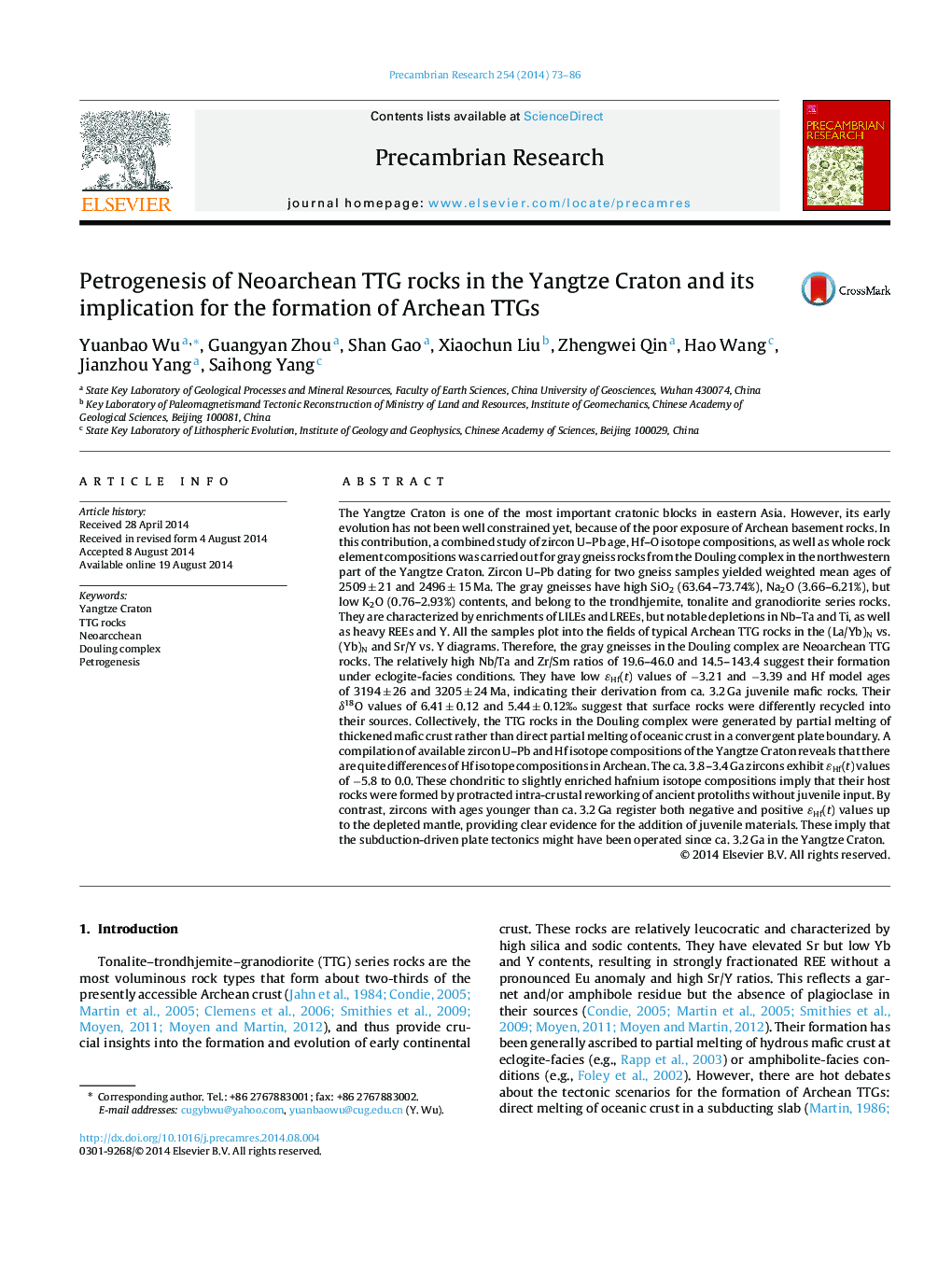| کد مقاله | کد نشریه | سال انتشار | مقاله انگلیسی | نسخه تمام متن |
|---|---|---|---|---|
| 4722867 | 1639620 | 2014 | 14 صفحه PDF | دانلود رایگان |

• There are 2.5 Ga TTG rocks in the northwestern Yangtze Craton.
• The TTG rocks were generated by partial melting of thickened mafic crust.
• Plate tectonics might have operated since ca. 3.2 Ga in the Yangtze Craton.
The Yangtze Craton is one of the most important cratonic blocks in eastern Asia. However, its early evolution has not been well constrained yet, because of the poor exposure of Archean basement rocks. In this contribution, a combined study of zircon U–Pb age, Hf–O isotope compositions, as well as whole rock element compositions was carried out for gray gneiss rocks from the Douling complex in the northwestern part of the Yangtze Craton. Zircon U–Pb dating for two gneiss samples yielded weighted mean ages of 2509 ± 21 and 2496 ± 15 Ma. The gray gneisses have high SiO2 (63.64–73.74%), Na2O (3.66–6.21%), but low K2O (0.76–2.93%) contents, and belong to the trondhjemite, tonalite and granodiorite series rocks. They are characterized by enrichments of LILEs and LREEs, but notable depletions in Nb–Ta and Ti, as well as heavy REEs and Y. All the samples plot into the fields of typical Archean TTG rocks in the (La/Yb)N vs. (Yb)N and Sr/Y vs. Y diagrams. Therefore, the gray gneisses in the Douling complex are Neoarchean TTG rocks. The relatively high Nb/Ta and Zr/Sm ratios of 19.6–46.0 and 14.5–143.4 suggest their formation under eclogite-facies conditions. They have low ɛHf(t) values of −3.21 and −3.39 and Hf model ages of 3194 ± 26 and 3205 ± 24 Ma, indicating their derivation from ca. 3.2 Ga juvenile mafic rocks. Their δ18O values of 6.41 ± 0.12 and 5.44 ± 0.12‰ suggest that surface rocks were differently recycled into their sources. Collectively, the TTG rocks in the Douling complex were generated by partial melting of thickened mafic crust rather than direct partial melting of oceanic crust in a convergent plate boundary. A compilation of available zircon U–Pb and Hf isotope compositions of the Yangtze Craton reveals that there are quite differences of Hf isotope compositions in Archean. The ca. 3.8–3.4 Ga zircons exhibit ɛHf(t) values of −5.8 to 0.0. These chondritic to slightly enriched hafnium isotope compositions imply that their host rocks were formed by protracted intra-crustal reworking of ancient protoliths without juvenile input. By contrast, zircons with ages younger than ca. 3.2 Ga register both negative and positive ɛHf(t) values up to the depleted mantle, providing clear evidence for the addition of juvenile materials. These imply that the subduction-driven plate tectonics might have been operated since ca. 3.2 Ga in the Yangtze Craton.
Journal: Precambrian Research - Volume 254, November 2014, Pages 73–86